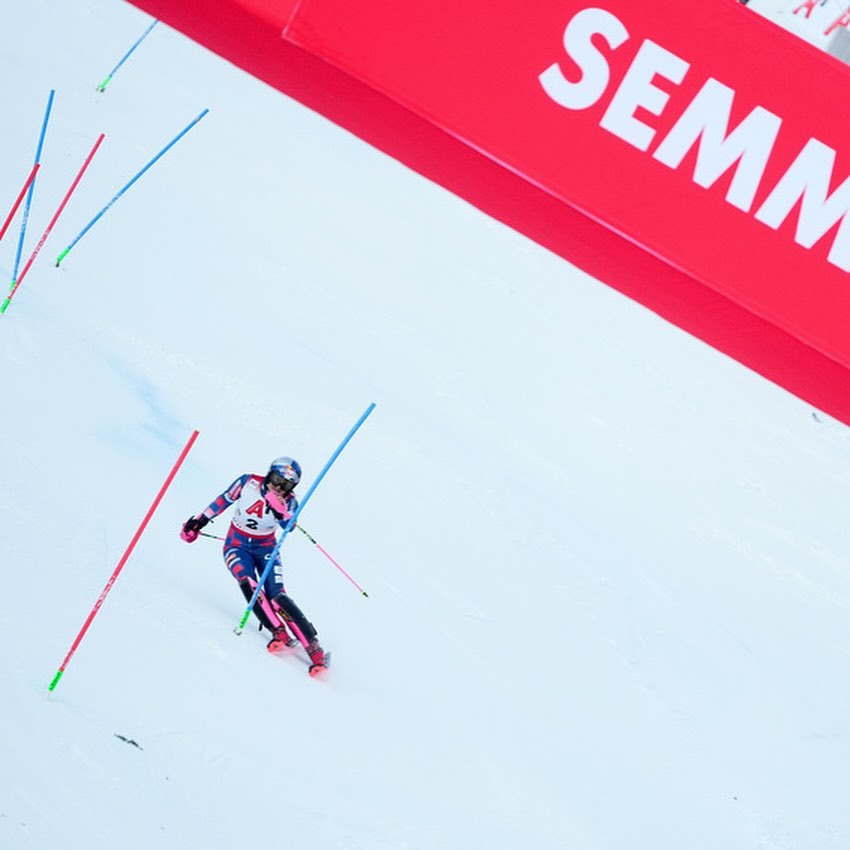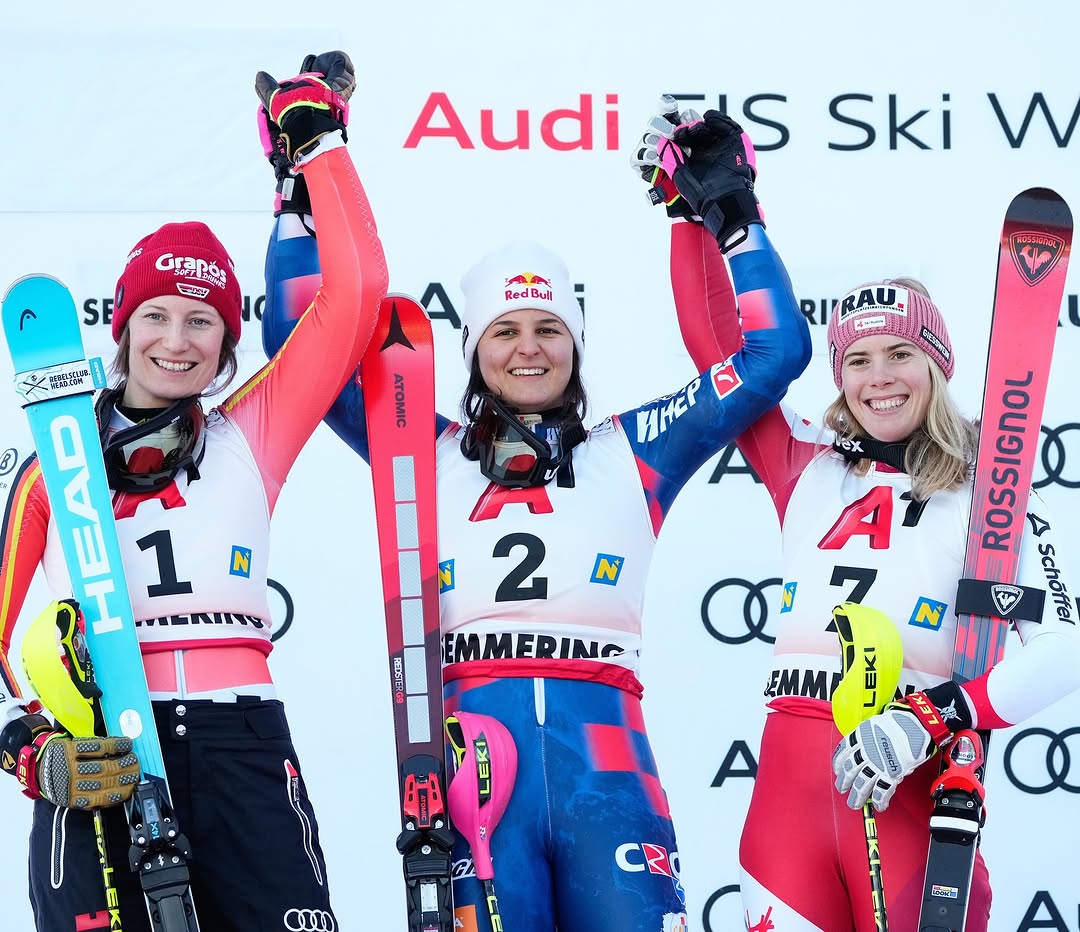
Last weekend, Zrinka Ljutić won her first World Cup race, the Slalom in Semmering, Austria. Ljutić won in dominant fashion, besting Lena Dürr of Germany by 1.75 seconds. Ljutić posted the fastest times for both runs of the race and her victory was the first by a Croatian woman since the legendary Janica Kostelic last won 18 years ago in 2006. SnowBrains spoke with Ljutić after the Killington races, just weeks before her smashing victory.
The Killington crowd is known for its loud fans and festival-like atmosphere, with race attendance ranging from 10,000 to 21,000 fans per day. Ljutić enjoys racing at Killington, “We feel really welcome here. So many people in the crowd were rooting for every skier. The atmosphere was very supportive.” Racing in America is neutral ground for the Europeans, whose ski rivalries run deep. Attending ski races there is similar to seeing historical rivals play each other in American sports leagues. When asked how the Superstar compares to European race venues, she replied, “There are always good conditions here. The surface was very compact; it was holding well for every racer. You could see high bibs coming in with no problem. That is a high standard. Some races in Europe can’t make snow like that. The hill is pretty interesting, especially for Slalom, with its terrain and long pitch. There is no space to relax anywhere.”
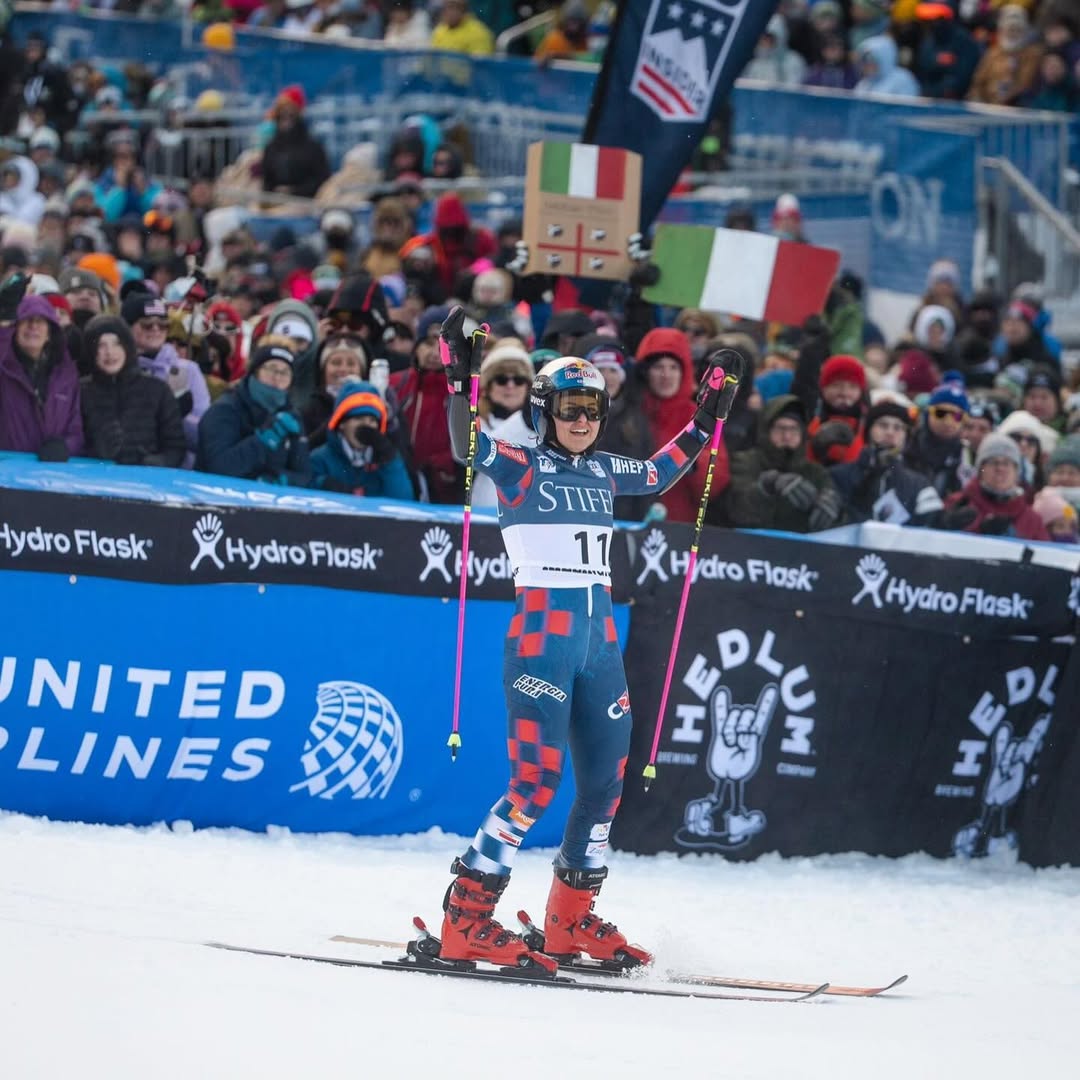
Ljutić earned her first podium in Giant Slalom and SnowBrains wanted to know what aspects of the race were challenging. “The course was a pretty normal World Cup Giant Slalom course. Most courses are pretty open, with long distances, space, and time; there is a lot of speed as well,” she replied. Regarding her performance, she added, “I felt good in Giant Slalom lately, especially with my switch to Atomic. The equipment is working in my favor as well. I knew I had this Giant Slalom somewhere. It was a matter of time before I got fully confident and loose enough to send it. I think I did it in the second run. It was one of my best runs, if not my best Giant Slalom run.”
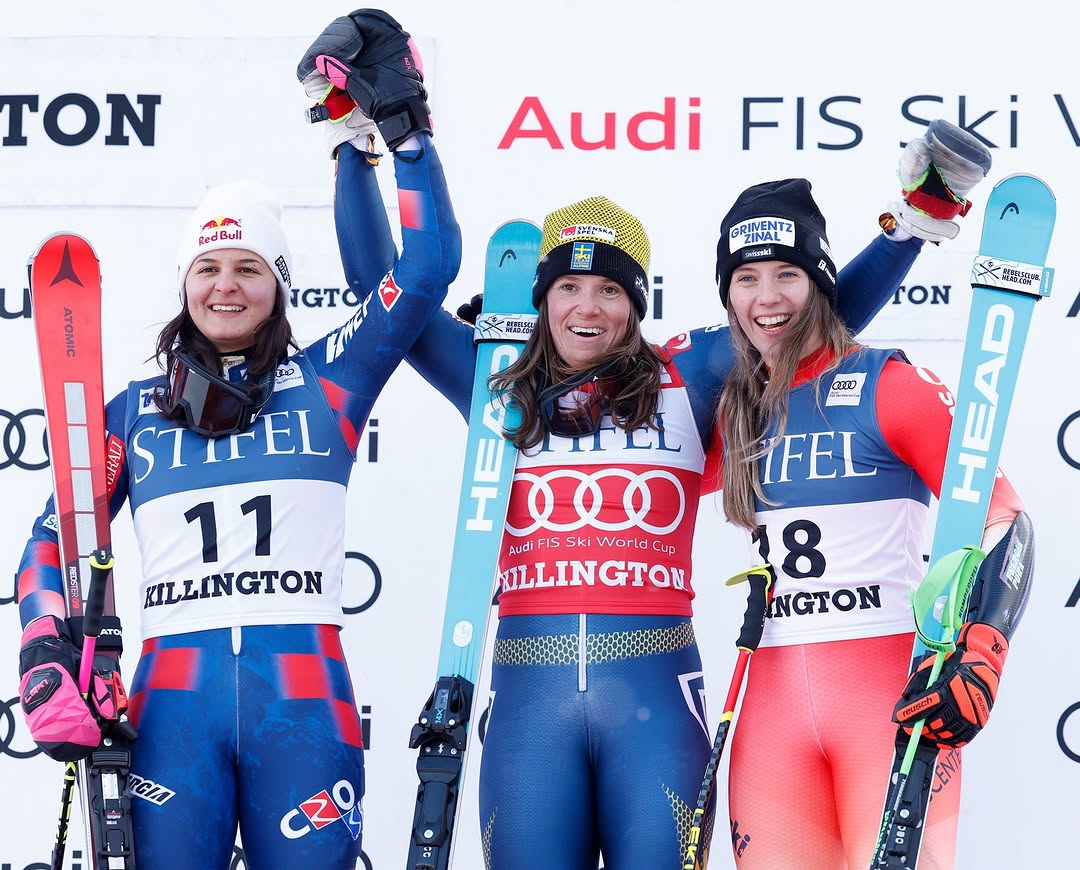
Slalom is Ljutić’s primary event and she is ranked in the top seed of the discipline, no mean feat for a young racer. When asked about her Slalom performance at Killington and if she left anything on the hill, she stated, “There is more to give in Slalom still. I have to find an optimal way of skiing and adjust some aspects of my set-up. It is a process. Different snow and course sets show that I don’t have it figured out completely. I am still very competitive.” The two runs at Killington were different and the first run had a complicated course set with tricky combinations. “The first course set was easier than I anticipated. I ran first and was sort of holding back a bit. The skiing was not ideal; I didn’t carry so much tempo in the finish. In the second run, I tried to find the fall line; the set was more of an attack and push course. I also felt like I could use the snow more, that I could get more response from the conditions.” The second run was more direct and the lower pitch contained a long stretch of turns with no combinations that allowed the racers to show their carving skills and speed. Ljutić commented, “I like to feel that I am using the skis and carving more than cutting and going straight. I grew up skiing so much and free skiing as well; I like to carve. That Slalom was as turny as it gets.”
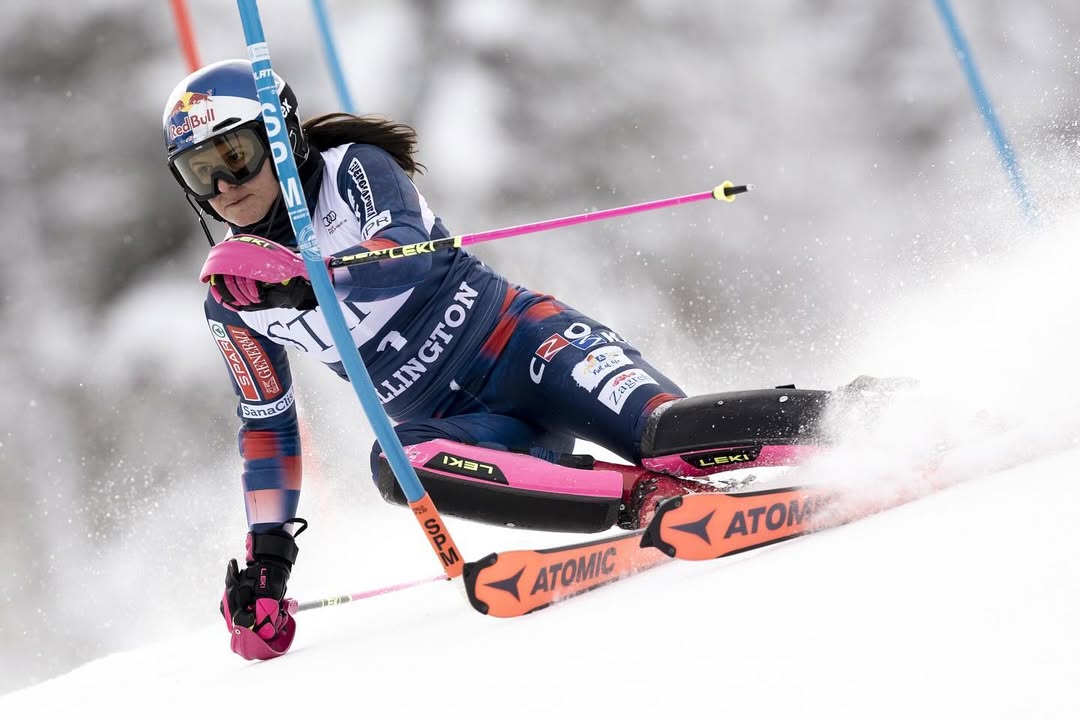
At 20 years old, Ljutić still has more in common with younger, developing racers than the older veterans on the tour. When asked if she would recommend that young racers come ski Superstar, she said, “Yes. There is only one way to find out what you have to do. You have to drop yourself into it and start somewhere.”
Entering this season, Ljutić switched equipment manufacturers from Rossignol to Atomic. Atomic approached her over a year ago about using its material, but she was still under contract with Rossignol. Coming out of the 2023-24 season, she did not feel that she had met all of her goals. At the end of this past season, that contract expired and Atomic reached out to her manager again to try and sign the young technical specialist, “I was curious to try something else. When I came to the World Cup, I did not test different equipment. First, we made the boots and they fit me very well. If the boot doesn’t fit, it is pointless to test the skis. Even the Atomic guys told me, ‘You just have to feel good in the boot. We can make you any ski you want.’” This insight into equipment selection is important for racers and non-racers; the boot is the most important piece of the modern equipment set-up. Ljutić had used Atomic boots in her junior racing days and she had good memories of their fit and performance.
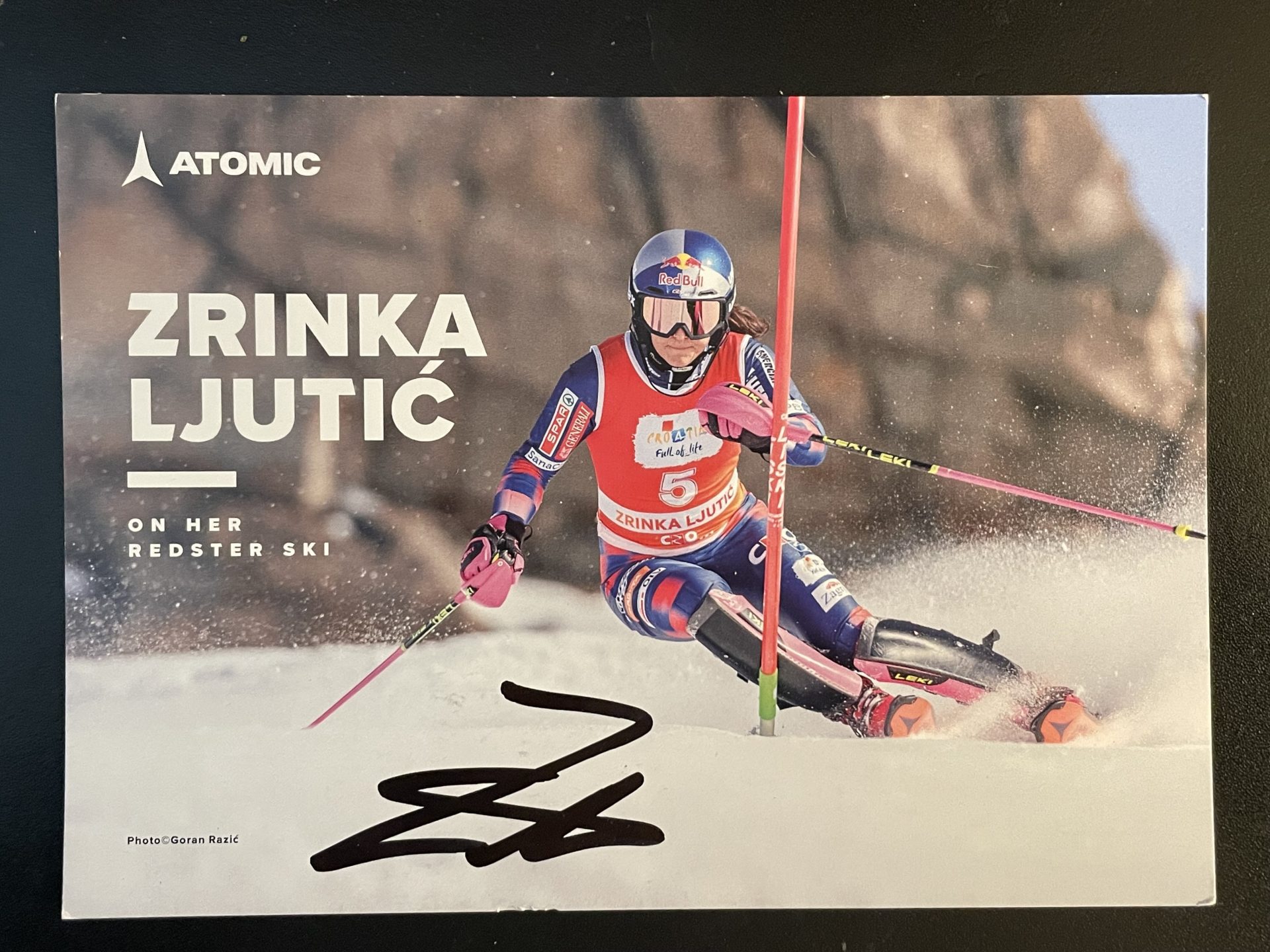
After the boot fitting, Ljutić and her team spent time testing on snow in Europe, “I tested a lot in springtime in different conditions. We were searching for them and got them on this one glacier. One day it was very icy; the next day, very aggressive and dry. It was perfect. I also had some spring, saltish snow. I tried the skis in most conditions.” She recounts that the Giant Slalom testing went smoothly and she was able to settle on a ski design that worked for her. Ironically, her main discipline of Slalom required more work, “In Slalom there was a bigger difference. It required different skiing technique.” With her testing done, she decided to switch and stated, “It was a very difficult decision. It was a big leap of faith. I trusted in the work that I did. I am happy I am here now.” Understanding the process and reasons for making this switch is important and aspiring racers need to know how to best go about the process.
World Cup athletes have to navigate the rigors of a race day that is similar to what young racers go through as they journey through the ranks. Race day is usually pressured and can get quite harried with warm-up, inspection, and racing. Technical events are more complex with their two-run format, and Ljutić commented, “The goal for me is to approach a World Cup race as close to any race or even like a training. I take seriously what I do every hour of a race day. I have many small routines. They keep me focused on the present.”
Like many athletes, Ljutić’s approach to race day went through changes as she grew more experienced. “It took me a while to figure out my way of approaching the race. No matter how good you ski in training, the race is always different. You don’t have to have it all figured out when you race, but you have to act like you do. I don’t like to talk to people too much on race day. I like to have my peace and sometimes it feels lonely. When you get to the start, you are so excited to let it all out and you can finally do it.” Maintaining focus, staying prepared, and being ready to go at a moment’s notice are skills that a racer must master. Whether one is a junior or World Cup racer, the routine of a race day is the same. Ljutić’s approach is one way that young athletes can use to prepare and learn to trust their routines.
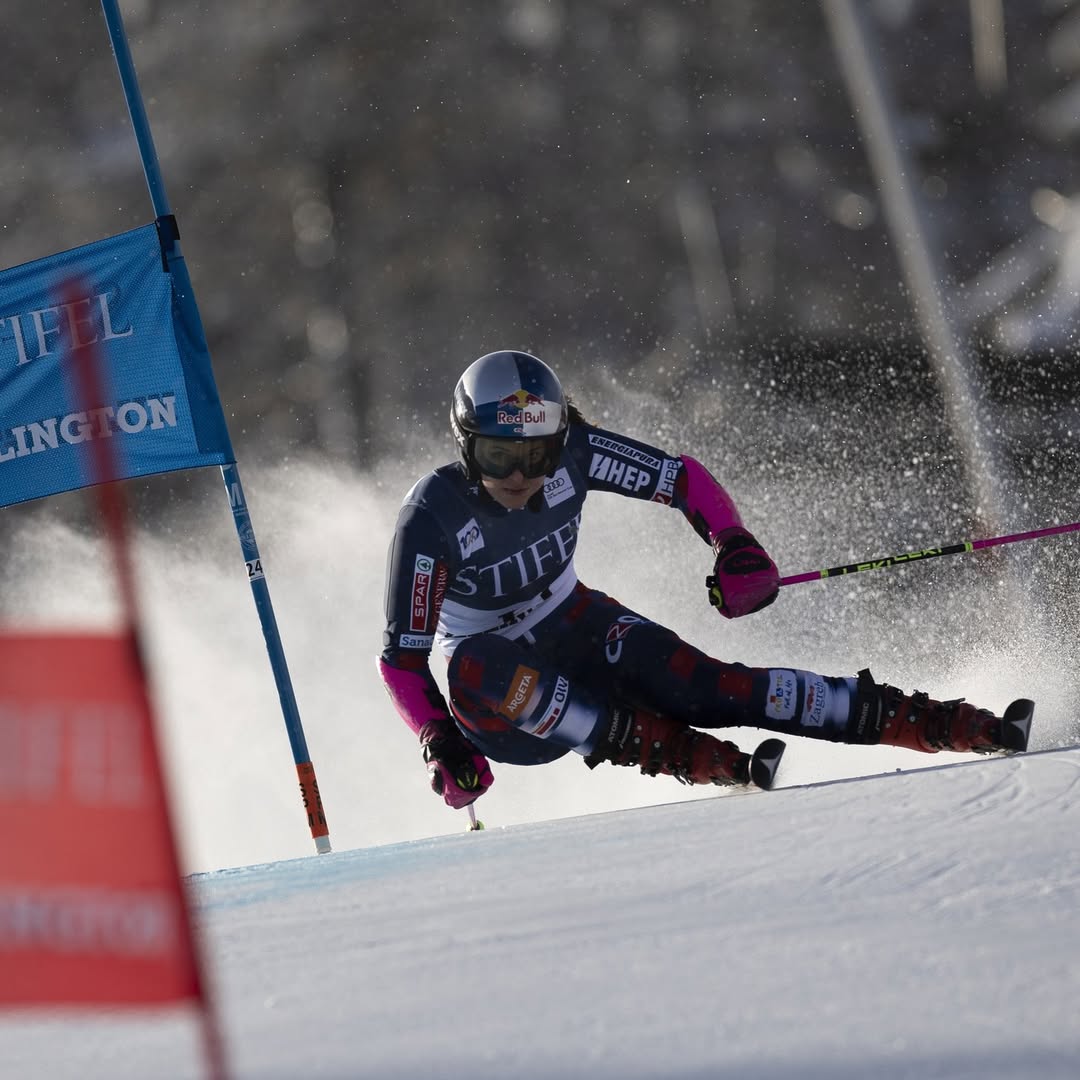
One aspect of ski racing that is critical for all racers is course inspection. SnowBrains asked Ljutić to detail her approach to course inspection, “I try to keep it the same as training. I’m more of a skier who doesn’t look too much at stuff, but I got better at remembering all the combinations. I’m still learning the nerdy stuff of tactics. I pay attention to focus points: my coaches and I come to a gate or a combination and say this is the most important point, so we focus on this. Usually, there are two or three of those in a World Cup race.” Ljutić’s emphasis on treating training like racing is one key to her success. This helps to minimize surprises on race day; she is comfortable and ready to perform. Many young racers will hear different approaches to studying courses from coaches and fellow racers. It is important to choose the one that works best for one’s style. There may be those who are surprised to hear that she is still learning tactics, but ski racing is complicated, with many aspects to consider for any given run. Ljutić’s emphasis on highlighting the key areas where the course may be tricky or present an opportunity for more speed is a deliberate approach that works for her. All skiers, racers and non-racers can benefit from working through their own inspection techniques as they prepare for their runs when training or free skiing.
The Killington races came at the start of a long season that has World Championships in Saalbach, Austria in February and next season, the Olympics will be held in Italy. When asked about the significance of the World Championships and Olympics, Ljutić commented, “In skiing, it’s always the overall title that is the biggest goal for everyone. The events have external stuff: build-up, marketing, media, and press. It’s just another race.” Staying focused is important for Ljutić. There are differences between the two events given their magnitude: World Championships occur every two years, while the Olympics happen every four. It isn’t surprising then to hear Ljutić state that, “Maybe World Championships medals are a bit less validated. It would be nice to win that one and get a title, something that sticks to your name. There is no way to plan your form for it in advance, more than you can just prepare for it as if it is another World Cup race.”
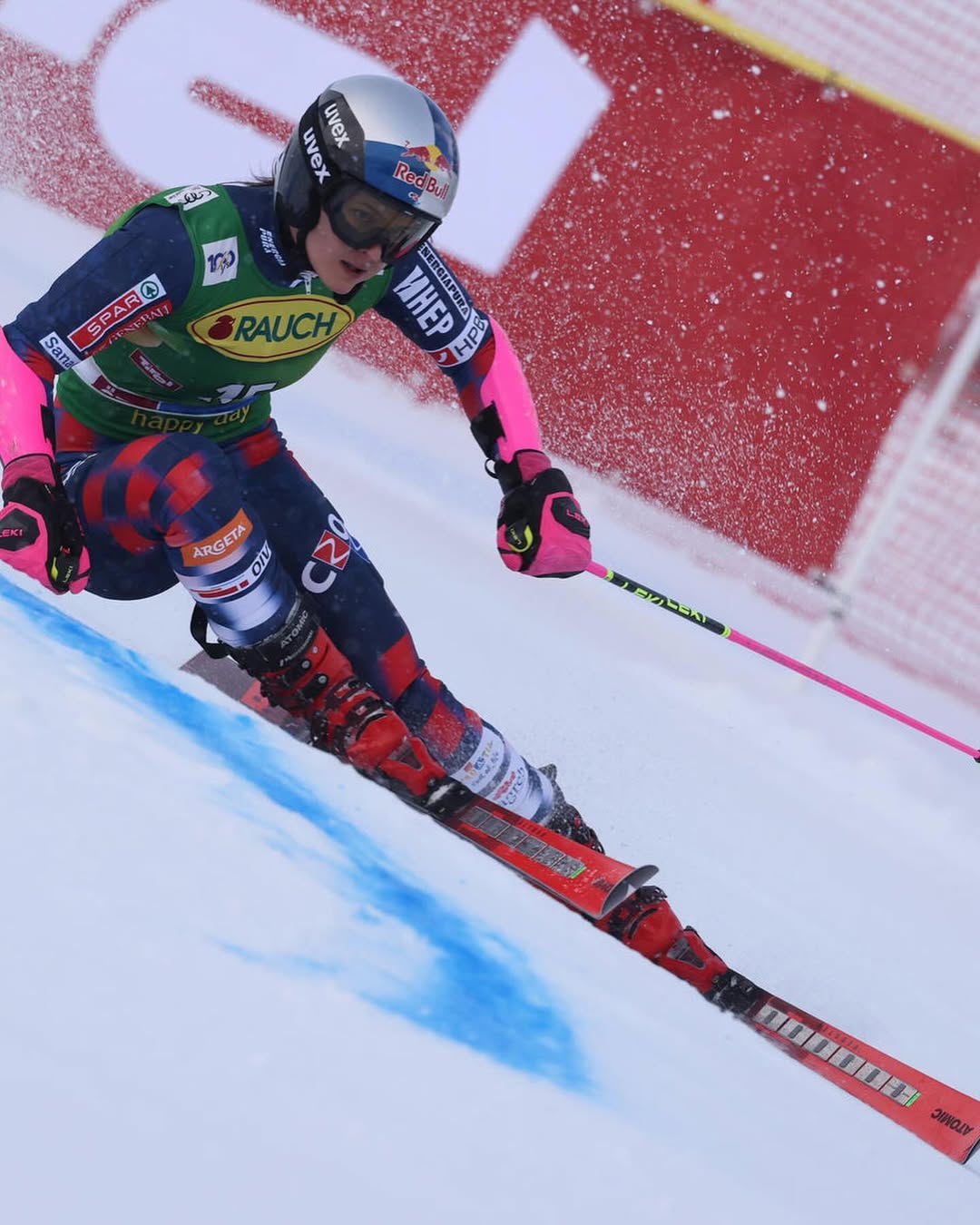
The Olympics put more pressure on the athletes. While Ljutić has already competed in the Olympics, she was much younger at the time and did not consider herself a viable challenger. Three years later that has changed due to her seeding and podium performances in Slalom and Giant Slalom, along with her Slalom victory; she is now considered a medal contender, “I would say that it is bigger. I think it’s why the Olympics are every four years. It takes so much time to improve; it goes in cycles. There is so much pressure.” Even with those admissions, Ljutić is ready and knows that the upcoming Olympics are happening at a good time in her racing career stating, “I see myself as someone who could win a medal.”
When asked if these special races impact her training schedule, Ljutić said, “Regarding training, some athletes, plan their volume of training accordingly. You train heavier the first two years, and as you get close to the Olympics, you look for quality versus quantity. There is a sweet spot that is hard to stay in for a long time, but you have to keep it for the two weeks or so at the Olympics.”
At only 20 years old, Ljutić has already reached a level that few racers will ever reach. Her upbringing has played a large part in her success. She grew up in a large family with her two brothers and sister; they were very active. Her father, Amir, was a former football player and he loved skiing. Ljutić recounts that her father “worked as an engineer, but he wouldn’t be able to spend time with us. He quit his job and became a ski coach and an instructor. He worked in Austria, and he brought us there to have fun skiing and to grow up in that environment. Every year, we would ski more; we liked it more and we started to race.” When asked if skiing in Austria helped with her development due to the level of competition and focus on the sport there, she replied, “Yes, definitely. We were exposed to skiing culture in Austria. I went to school there: mornings in school and afternoons training. We trained with Austrians; we learned to live and behave there from an early age.” This exposure to competitive ski racing in Austria helped with Ljutić’s development more so than if she had stayed and trained in Croatia.
Despite her young age, Ljutić has extensive World Cup racing experience. When asked what advice she would give to young racers who are just starting their journey, she replied, “You have to love it. Even on bad days. Some days are not that fun. You get cold and tired; you are away from home a lot. You have to decide to commit to it, especially given the pull of teenage life. It’s one or the other; to succeed, you cannot have both.” While this may be off-putting to those who want a more traditional childhood, she adds, “There are a lot of rewarding things when you take this path. You travel the world; you have many unique experiences and emotions that you most likely won’t get in a classroom. Everyone finds out for themselves what they like the most about skiing. Sometimes it is a lot, but it is rewarding.”
It seems almost cruel to ask a 20-year-old about the future; for Zrinka Ljutić, the future is now. When asked if she has considered what her post-skiing life might be like, she responded, “I have been thinking about that lately. It will be very hard for me to leave skiing; as I get older, it’s going to be more difficult to decide it’s time to stop. It’s not like I don’t have other interests, but this is something that I am good at and love the most. I will feel a bit empty after I stop. It makes me more present now to give my all when I can while I am still young and healthy.” This focused, mature young athlete is enjoying her career and her post-racing life is far away for now; it is safe to assume that her future will be bright both on and off the racing piste.
